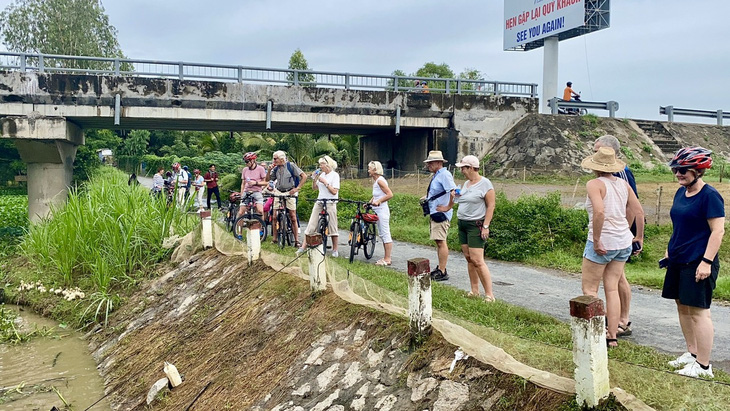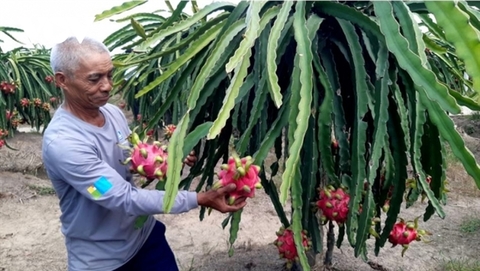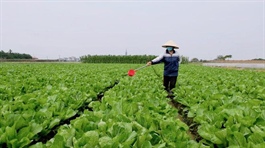Vietnam faces obstacles welcoming high-end tourists
Vietnam faces obstacles welcoming high-end tourists
Many Vietnamese tourism enterprises focus on serving high-end tourists due to higher economic efficiency. However, they have been facing multiple bottlenecks, including those related to visas and infrastructure, in welcoming such visitors.

The European Chamber of Commerce in Vietnam, at a ceremony to launch its White Book in the middle of this month, proposed exempting visas for three to six months for high-class European travelers who want to spend long holidays in Vietnam.
Sheraton Grand Danang Resort & Convention Center in Da Nang City, central Vietnam was chosen as the venue for luxury wedding parties by Indian billionaires in 2019 and 2023. The hotel is preparing for the third wedding party of a wealthy Indian family.
Ngan Nguyen, a representative of the hotel, said money is not a problem for these customers.
Wedding parties for Indian people last three to five days each. They tend to book entire hotels for their guests.
As a result, their spending is much higher than that of individual customers.
“Wedding parties for Indian people are often crowded, with 400-600 guests each. We are improving our capacity to serve such a high number of guests, even 1,000 guests per party,” Ngan Nguyen added.
After the COVID-19 pandemic, Da Nang’s tourism sector has focused on serving tourists visiting the city while on their business trips and those holding wedding parties and events in the city.
As a result, the number of tourists coming to the coastal city last year was half of that in 2019 but the city’s tourism revenue was almost the same at VND21.3 trillion (US$900 million).
In addition to wedding parties, many local travel companies are focusing on passengers of international cruise ships.
However, obstacles in welcoming these tourists remain enormous.
Nguyen Thi Anh Tu, chairwoman of Alden Travel Service Trading Corporation based in Chau Doc City, An Giang Province, southern Vietnam, which specializes in organizing tours in the province and the Mekong Delta, said the tourism sector in An Giang and Vietnam as a whole has many shortcomings.
In particular, the country’s visa waiver period for foreigners is short, while some countries are not entitled to the visa waiver policy.
In addition, large ships cannot travel on the Tien and Hau Rivers in the Mekong Delta.
“Ships operating on rivers have recently been asked to install AIS [Automatic Identification System] and VHF [Very High Frequency] systems like seagoing vessels, which is unreasonable," Tu said.
“Our ships carrying international tourists on rivers are wooden ones which travel several kilometers per trip.
"Meanwhile, AIS and VHF systems cost each ship over VND10 million [$422.5], so the installation of these systems is wasteful."
A representative of the provincial Department of Tourism told Tuoi Tre (Youth) newspaper that ships must install positioning systems as required by the Ministry of Transport.
If tourism enterprises find it hard to apply the regulation, the department will propose removing it.
In Khanh Hoa Province, south-central Vietnam, its Nha Trang City expects to welcome over 30 international cruise ships carrying tens of thousands of visitors this year, mainly from the U.S. and Europe.
However, some cruise ships have canceled their plans to visit Nha Trang this month.
According to local enterprises, the Khanh Hoa People’s Committee last month allowed cars with more than 29 seats each to be issued with tourism badges to be able to enter the downtown area of Nha Trang City during peak hours.
However, no vehicles have been granted the badges since then as their drivers do not have certificates to serve tourists.
A representative of the provincial Department of Tourism told Tuoi Tre that the department had opened training courses on serving tourists for drivers and staff of vehicles transporting visitors so that the vehicles will be granted the tourism badges but many enterprises did not pay attention to these courses.
The department will open two similar courses between March 13 and 18.
Pham Ha, chairman of Lux Group, a local travel service provider, said that his firm has nurtured new products to encourage high-end foreign visitors to spend more in Vietnam but it has faced many difficulties.
“For example, visitors who want to visit Bai Tu Long, Ha Long, and Lan Ha Bays have to take three different cruise ships," Ha said.
"We hope cruise ships will be allowed to travel through these bays as their routes can be easily controlled via GPS [Global Positioning System]."
In addition, Ha Long Bay is now polluted with garbage, smoke, and dust, while marinas are substandard.
Many enterprises threw their support behind the focus on high-end tourists, saying that this is an unavoidable trend to improve Vietnam’s tourism and Vietnamese destinations to meet international standards.
The high spending of these visitors can also benefit shopping and entertainment services.
According to Nguyen Duc Quynh, chairman of the Da Nang Hotel Association, many destinations in Vietnam have good lodging facilities but they are confronted by a shortage of recreation centers and activities on beaches.
“In spite of a sea tourism center, Da Nang fails to provide a yacht for admiring sunset on the sea," Quynh pointed out.
Enterprises agreed that localities should enhance the attraction of investment in tourism with preferential policies.
They need to choose strategic investors to develop high-end entertainment and shopping centers.
Experienced in providing high-end tourism services and products for foreign visitors, Cao Anh Tuan, director of sales at Paradise Vietnam, a cruise service provider, said that high-end tourists require high-quality services, prefer experiencing nature, culture, and music, and appreciate green and sustainable tourism.
However, green tourism is limited, failing to meet customers’ demands due to the asynchronous tourism infrastructure development and high costs for developing such tourism.
A travel company’s leader said tourists on cruise ships are often high-end ones. They tend to spend 8-12 hours at a destination before returning to their vessels.
However, souvenirs and specialties in localities are not attractive, while many foreign tourists are still overcharged.
Nguyen Ngoc Anh, director of Omega Tours Company, said hotels and resorts in some localities, such as Da Nang, can meet basic catering, entertainment, and shopping demands but these services are not enough for high-end tourists.
“Many partners asked me why sports services on rivers and at sea and high-end entertainment and shopping centers are rare in cities," Anh said.
“This is a big issue but tourism authorities should seriously think about it.”
















